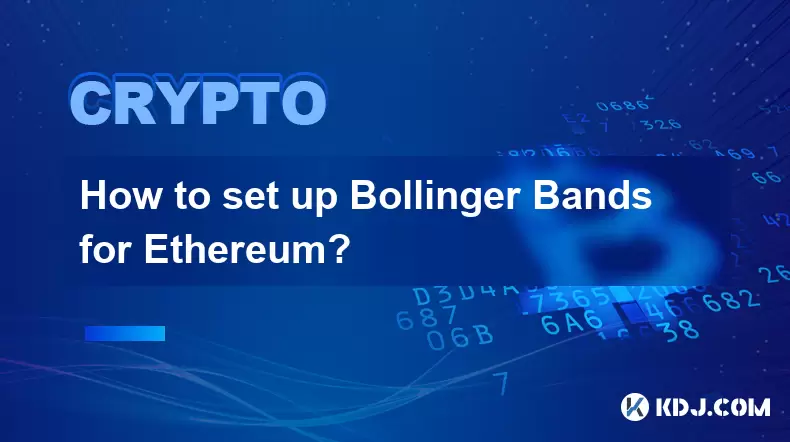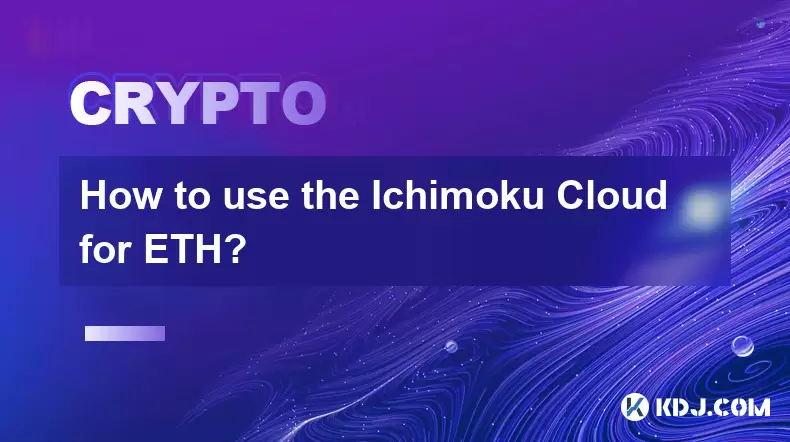-
 Bitcoin
Bitcoin $117400
-0.46% -
 Ethereum
Ethereum $3768
0.60% -
 XRP
XRP $3.551
2.09% -
 Tether USDt
Tether USDt $1.000
0.00% -
 Solana
Solana $203.2
11.30% -
 BNB
BNB $770.9
1.92% -
 USDC
USDC $0.9999
0.01% -
 Dogecoin
Dogecoin $0.2709
-0.02% -
 Cardano
Cardano $0.9024
4.49% -
 TRON
TRON $0.3139
0.60% -
 Hyperliquid
Hyperliquid $45.60
-1.41% -
 Stellar
Stellar $0.4730
-1.34% -
 Sui
Sui $4.025
2.15% -
 Chainlink
Chainlink $19.79
2.19% -
 Hedera
Hedera $0.2724
-2.39% -
 Avalanche
Avalanche $25.93
3.05% -
 Bitcoin Cash
Bitcoin Cash $524.0
-1.83% -
 Shiba Inu
Shiba Inu $0.00001558
0.50% -
 Litecoin
Litecoin $116.7
-0.30% -
 UNUS SED LEO
UNUS SED LEO $8.996
0.00% -
 Toncoin
Toncoin $3.334
1.83% -
 Polkadot
Polkadot $4.506
0.34% -
 Uniswap
Uniswap $10.99
4.83% -
 Ethena USDe
Ethena USDe $1.001
0.03% -
 Pepe
Pepe $0.00001461
3.17% -
 Monero
Monero $320.3
-1.01% -
 Bitget Token
Bitget Token $4.935
0.36% -
 Dai
Dai $0.9998
0.00% -
 Aave
Aave $322.4
-1.25% -
 Bittensor
Bittensor $455.6
9.33%
How to set up Bollinger Bands for Ethereum?
Bollinger Bands help Ethereum traders spot volatility, overbought/oversold levels, and potential breakouts by using a 20-period SMA with upper/lower bands set at 2 standard deviations.
Jul 21, 2025 at 09:43 am

Understanding Bollinger Bands and Their Relevance to Ethereum
Bollinger Bands are a widely used technical analysis tool designed to measure price volatility and identify potential price breakouts. Developed by John Bollinger in the 1980s, this indicator consists of three lines: a simple moving average (SMA) in the center, and two outer bands that are standard deviations away from the SMA. In the context of Ethereum (ETH), which is known for its high volatility, Bollinger Bands can help traders identify overbought or oversold conditions, potential reversals, and volatility squeezes.
The standard settings for Bollinger Bands are 20 periods for the SMA and two standard deviations for the upper and lower bands. However, these settings can be adjusted depending on the trader's strategy and the time frame being analyzed. Ethereum's price action often exhibits rapid swings, making it crucial to understand how Bollinger Bands adapt to such conditions.
Configuring Bollinger Bands on Trading Platforms
Most cryptocurrency trading platforms, including Binance, Coinbase, and TradingView, offer Bollinger Bands as a built-in indicator. To set them up, navigate to the charting interface and locate the indicators section. Click on "Bollinger Bands" to add it to your Ethereum price chart.
Once added, the default settings will appear. The period is typically set to 20, and the standard deviation multiplier is usually 2. These values can be changed to suit your trading style. For example, a shorter period like 10 may provide more signals but could also result in more false positives. Conversely, a longer period like 50 might filter out noise but may lag behind current price action.
It's important to note that Ethereum’s 24/7 market nature means that volatility can occur at any time, so adjusting the time frame of the chart (e.g., 1-hour, 4-hour, daily) will influence how Bollinger Bands behave. Traders should experiment with different settings and time frames to find the optimal configuration for their trading strategy.
Interpreting Bollinger Band Signals in Ethereum Trading
When using Bollinger Bands for Ethereum trading, several key signals can be observed. One of the most common is the price touching or crossing the upper or lower bands, which may indicate overbought or oversold conditions. However, in strong trending markets, prices can ride the bands for extended periods, so this should not be interpreted as an automatic reversal signal.
Another important concept is the Bollinger Band squeeze, which occurs when the bands contract tightly around the price. This often precedes a significant price move, either up or down. Traders can use this as a potential entry point, especially when combined with other indicators like volume or RSI.
Additionally, the middle SMA line acts as a dynamic support or resistance level. If the price is consistently above the SMA, it suggests a bullish trend, while a price below the SMA may indicate a bearish bias. Ethereum traders should pay attention to how the price interacts with this central line, especially during periods of consolidation or breakout.
Combining Bollinger Bands with Other Indicators
Using Bollinger Bands in isolation can lead to misleading signals, especially in the volatile cryptocurrency market. Therefore, it's essential to combine them with other technical tools to increase the accuracy of trade setups. One popular approach is pairing Bollinger Bands with the Relative Strength Index (RSI).
For instance, if Ethereum's price touches the upper Bollinger Band and the RSI is above 70, it may signal an overbought condition, suggesting a potential pullback. Conversely, if the price hits the lower band and the RSI is below 30, it could indicate oversold conditions and a possible bounce.
Another effective combination is using volume indicators like On-Balance Volume (OBV) or Chaikin Money Flow (CMF). A Bollinger Band breakout accompanied by a surge in volume can confirm the strength of the move. For example, if Ethereum breaks out of the upper band with high volume, it may signal a strong bullish momentum.
Customizing Bollinger Bands for Ethereum-Specific Strategies
Ethereum’s price behavior can vary significantly based on market conditions, news events, and macroeconomic factors. Therefore, traders may need to customize Bollinger Bands to suit different strategies.
For scalping or short-term trading, reducing the period to 10 or 15 and using a 1-hour or 15-minute chart can provide more frequent signals. However, this approach may generate more false signals, so it’s crucial to filter them using other indicators.
For swing trading, a standard 20-period setting on a 4-hour or daily chart may be more appropriate. This allows traders to capture larger price movements while avoiding excessive noise. Additionally, using Bollinger Band width or %B (percentage bandwidth) can help quantify volatility and potential breakout opportunities.
Traders should also consider Ethereum-specific events, such as network upgrades, regulatory news, or macroeconomic announcements, which can cause sudden volatility. During such times, Bollinger Bands may expand dramatically, and adjusting the standard deviation multiplier can help accommodate these swings without generating premature signals.
Frequently Asked Questions
What does it mean when Ethereum’s price is outside the Bollinger Bands?
When Ethereum’s price moves outside the Bollinger Bands, it indicates extreme volatility or a potential breakout. While this can signal a strong trend continuation, it doesn't always mean a reversal. Traders should look for confirmation from volume or other indicators before making a trade.
Can Bollinger Bands be used on all time frames for Ethereum?
Yes, Bollinger Bands can be applied to any time frame, from 1-minute charts to weekly charts. However, the effectiveness of the signals may vary. Shorter time frames tend to produce more frequent but less reliable signals, while longer time frames offer fewer but potentially more meaningful setups.
Is it better to use Bollinger Bands with candlestick patterns?
Combining Bollinger Bands with candlestick patterns can enhance trade accuracy. For example, a bullish engulfing pattern near the lower Bollinger Band may suggest a strong buying opportunity, especially if confirmed by volume or RSI.
How often should I adjust the Bollinger Band settings for Ethereum?
There is no fixed rule for adjusting settings. Traders should monitor how well the bands align with Ethereum’s price behavior. If the bands are either too wide or too narrow for the current market conditions, tweaking the period or standard deviation can help improve their relevance.
Disclaimer:info@kdj.com
The information provided is not trading advice. kdj.com does not assume any responsibility for any investments made based on the information provided in this article. Cryptocurrencies are highly volatile and it is highly recommended that you invest with caution after thorough research!
If you believe that the content used on this website infringes your copyright, please contact us immediately (info@kdj.com) and we will delete it promptly.
- XRP, Bitcoin, Ripplecoin: Navigating the Crypto Landscape in 2025
- 2025-07-22 20:30:13
- Cardano Ecosystem Watch: Can PayFi Token Remittix Trigger an ADA Overtake?
- 2025-07-22 20:50:13
- JasmyCoin Price Forecast: Chart Analysis Points to Potential Surge
- 2025-07-22 20:55:13
- Remittix, XRP, and Dogecoin: What's Hot in the Crypto Game Right Now?
- 2025-07-22 20:10:14
- BlockchainFX, PEPE, and USDT: What's the Buzz in the Crypto Jungle?
- 2025-07-22 18:50:12
- Ripple's RLUSD: Institutional Backing Fuels Stablecoin Ascent
- 2025-07-22 18:30:12
Related knowledge

What is Chainlink (LINK)?
Jul 22,2025 at 02:14am
Understanding Chainlink (LINK): The Decentralized Oracle NetworkChainlink is a decentralized oracle network designed to bridge the gap between blockch...

What is Avalanche (AVAX)?
Jul 22,2025 at 08:35am
What is Avalanche (AVAX)?Avalanche (AVAX) is a decentralized, open-source blockchain platform designed to support high-performance decentralized appli...

What is Polkadot (DOT)?
Jul 19,2025 at 06:35pm
Understanding the Basics of Polkadot (DOT)Polkadot (DOT) is a multi-chain network protocol designed to enable different blockchains to transfer messag...

What is Monero (XMR)?
Jul 21,2025 at 10:07am
What is Monero (XMR)?Monero (XMR) is a decentralized cryptocurrency designed to provide enhanced privacy and anonymity for its users. Unlike Bitcoin a...

How to add indicators to Ethereum chart on TradingView?
Jul 19,2025 at 07:15am
What Is an Ethereum Chart on TradingView?The Ethereum chart on TradingView is a visual representation of the price movement of Ethereum (ETH) over a s...

How to use the Ichimoku Cloud for ETH?
Jul 18,2025 at 09:56pm
Understanding the Ichimoku Cloud and Its ComponentsThe Ichimoku Cloud, also known as Ichimoku Kinko Hyo, is a versatile technical analysis tool that p...

What is Chainlink (LINK)?
Jul 22,2025 at 02:14am
Understanding Chainlink (LINK): The Decentralized Oracle NetworkChainlink is a decentralized oracle network designed to bridge the gap between blockch...

What is Avalanche (AVAX)?
Jul 22,2025 at 08:35am
What is Avalanche (AVAX)?Avalanche (AVAX) is a decentralized, open-source blockchain platform designed to support high-performance decentralized appli...

What is Polkadot (DOT)?
Jul 19,2025 at 06:35pm
Understanding the Basics of Polkadot (DOT)Polkadot (DOT) is a multi-chain network protocol designed to enable different blockchains to transfer messag...

What is Monero (XMR)?
Jul 21,2025 at 10:07am
What is Monero (XMR)?Monero (XMR) is a decentralized cryptocurrency designed to provide enhanced privacy and anonymity for its users. Unlike Bitcoin a...

How to add indicators to Ethereum chart on TradingView?
Jul 19,2025 at 07:15am
What Is an Ethereum Chart on TradingView?The Ethereum chart on TradingView is a visual representation of the price movement of Ethereum (ETH) over a s...

How to use the Ichimoku Cloud for ETH?
Jul 18,2025 at 09:56pm
Understanding the Ichimoku Cloud and Its ComponentsThe Ichimoku Cloud, also known as Ichimoku Kinko Hyo, is a versatile technical analysis tool that p...
See all articles

























































































